Well the concept of Calendar is important and exhaustive in nature and Calendars in SAP are basically used to define the working days for plants/warehouses, shipping points. They are also in fact assigned to routes in logistics stream area or unloading points at Customers. For the accurate calculation of date, calendar in SAP have to be maintained & assigned correctly. For all exceptions requirement, an additional factory calendar might be necessary like for example if the production produces on all days, but shipping is done only on working days. Then the plant can have a different calendar than the shipping point.
In general synopsis, a calendar consists out of three basic elements which are clear identified below for reference and through SAP transaction SCAL, it is defined: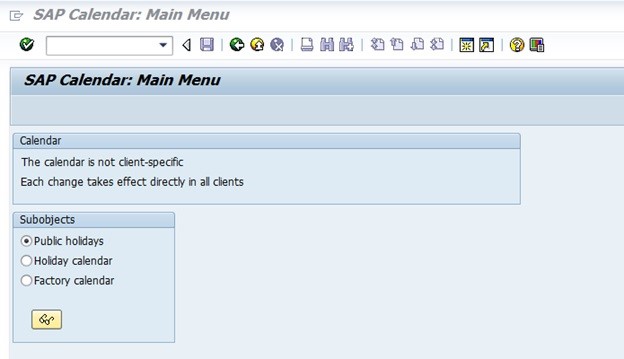
Public Holidays – Definition of the public holidays are done with following type:
- with fixed date
- with a fixed day from date
- Distance to Easter
- Easter Sunday
- Floating Public Holiday

Holiday calendar: This contain comprehensive list of all public holidays per country (e.g. Christmas).

Factory calendar: This calendar defines in generic sense which days are working days. With ‘special rules’, workdays can be set as non-working days in the individual calendar. The factory calendar is defined on the basis of a public holiday calendar, weekdays that are working days must also be specified in this calendar.


Special Rules
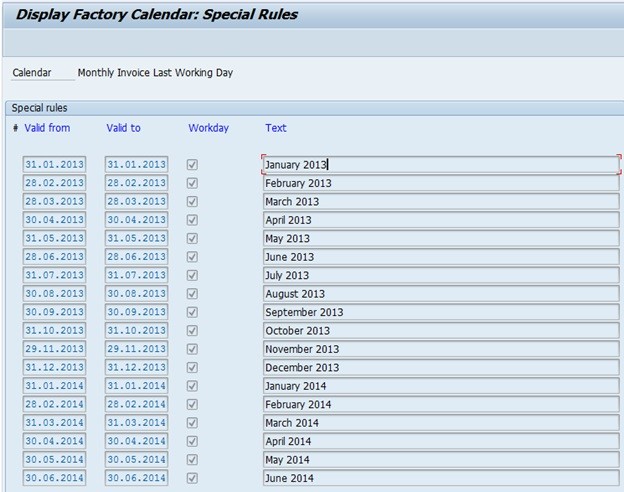
Calendar is used in the following cases i.e. on the baseline of Organizational unit, Master Data and Transaction data of SAP:
- Organizational Unit
- Plants
- Shipping points
- Transport planning points
- Route definitions in Logistics
- Sales organizations
- Company code
- Master Data
- Unloading points in the customer master
- Invoice dates in the customer master (sales views)
- Transactional Data
- SD Billing plan
- Process orders / planned orders
Impact of Calendar on Delivery scheduling:
In the Organization unit i.e. Plant – factory calendar maintained has no influence on the delivery scheduling process. The calendar setup in the following area has impact on the delivery scheduling process:
Properties of delivery scheduling:
- Transit time : determined from the route – (factory) calendar assigned to route
- Loading time : determined from shipping point – shipping point calendar
- Pick and pack time : determined from shipping point or route – shipping point calendar
- Transportation planning time : determined from the route – (factory) calendar assigned to route
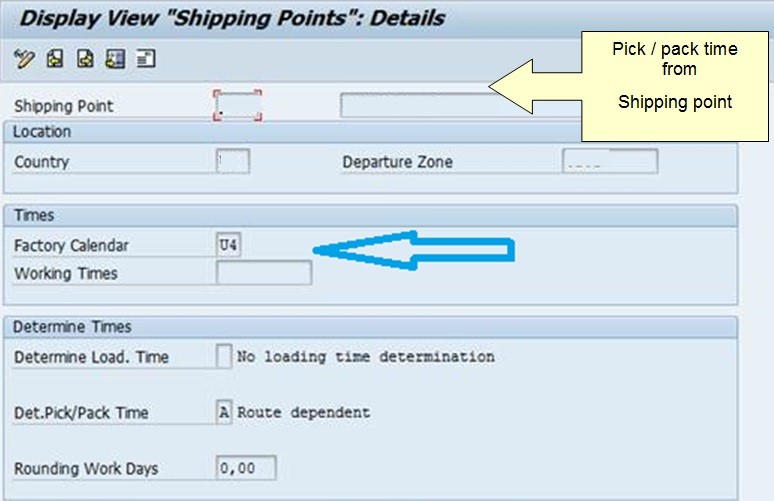
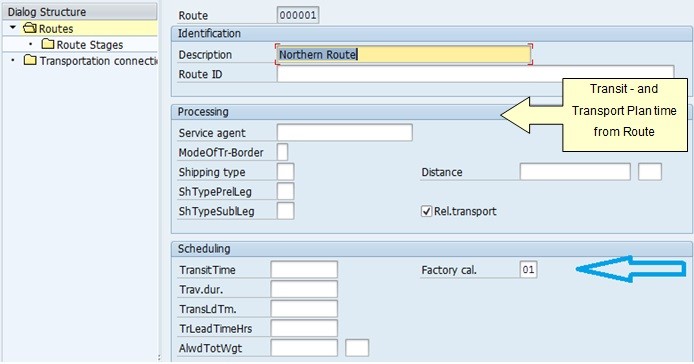
Let us take a simple example where Customer places Sales Order for 100 unit of Material and the requested delivery date indicated by customer as 10th March 2015.
The Delivery scheduling during Order creation is as follows:

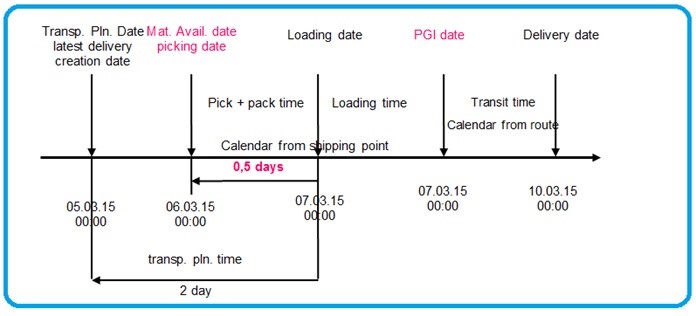

Specifics of standard Table of Calendar:
- TFACD: Factory calendar definition
- TFACS: Factory calendar (display)
- TFACT: Factory calendar texts
- THOC: Public Holiday Calendar
- THOCD: Public holiday definitions
- THOCI: Public holiday calendar index
- THOCS: Public holiday calendar (display)
- THOCT: Public holiday calendar texts
- TFAIN: Calendar: Intervals for company holidays, special shifts
- TFAIT: Calendar: Text for factory calendar intervals
Tables having factory calendar:
- KNVA: Customer Master Unloading Points
- KNVV: Customer Master Sales Data
- T001W: Plants
- TVRO: Routes
- TZBZ: Company code: Additional data
- TVST: Organizational Unit: Shipping Points
- TTDS: Organizational Unit: Transportation Scheduling Point
Special Note: As the delivery and invoice creation jobs are scheduled based on the SAP calendar, it’s required to start these jobs manually on the last working day before holiday period.

